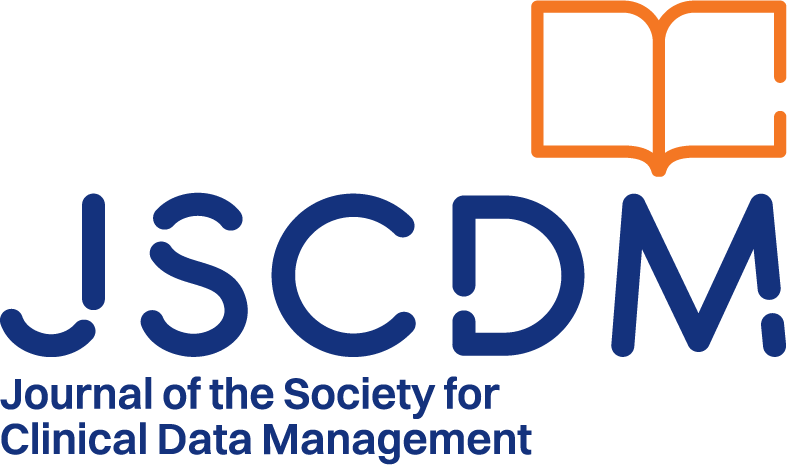1. Introduction
Patient-reported outcomes (PROs) are often used to capture overall health behaviors in clinical trials and real-world studies. With the rise in prevalence, sponsors have begun exploring new modes of PRO administration. The industry’s current best practice is to provision sponsor-owned devices that include pre-programmed applications for subject PRO collection. However, as society transitions into a technology-enabled world, many sponsors have taken an interest in the ‘Bring Your Own Device’ (BYOD) strategy as well. Rather than provisioning sponsor-owned devices, the BYOD strategy permits subjects to record PRO data on personal tablets and smartphones instead. While the regulatory agencies have not released formal guidance on approaching the BYOD method, industry experts progressively generate evidence to support BYOD as a feasible option. Given the latest technology trends and increased smartphone device penetration, there is reason to believe BYOD will only continue to gain popularity in the coming years.
2. Benefits of BYOD
BYOD for electronic PRO (ePRO) in clinical trials benefits the entire ecosystem of stakeholders from subjects, site staff, and sponsors. Allowing subjects to leverage personal devices poses some clear benefits. First and foremost, the BYOD strategy promotes subject convenience. It not only eliminates the learning curve of utilizing provisioned hardware, but also reduces the burden of carrying a second handheld device. This can be incredibly taxing for studies collecting event-driven PRO data. In a study of 155 US subjects between the ages of 19 and 69, a survey was conducted to capture overall attitudes towards BYOD. Of the subjects, 45% reported a preference for BYOD compared to 15% who reported a preference for provisioning (40% had no preference). Of these subjects, 94% reported willingness to download an app on their own device as well.1 Another study conducted by the Innovation Research Group at Healthcare Innovation and Technology Lab (HITLAB) has supported these results. Researchers completed in-depth interviews for five randomly selected participants in both the BYOD and provisioned device subgroups. All participants were located in the US, above the age of 18, and owned a smartphone device. In the interviews, a common reason documented for subject preference over the provisioning model included eliminating worry for losing, breaking, or forgetting the provisioned device.2
Other study findings suggest potential benefits for the sponsor. In HITLAB’s results, researchers also studied the medication adherence of 87 US subjects split into BYOD and provisioned device subgroups. The study found that the BYOD subgroup demonstrated significantly higher engagement compared to the provisioned device subgroup. This proved to have a considerable effect on medication adherence; ratios remained relatively strong over the study duration in the BYOD group but declined meaningfully for study-provided phone users.2 Overall, these results suggest that BYOD has the potential to improve study compliance and to keep subjects engaged for longer durations of time. In turn, sponsors can expect more consistent data collection, leading to higher accuracy and efficiency.
Another advantage of BYOD is the potential to eliminate the burden of inventory management and logistics. Currently, device management and distribution practices consume time and resources and can often end in supply issues, such as damaged or unavailable devices. Utilizing the BYOD strategy has the potential to streamline procedures by removing the need for shipment and hardware inventory altogether. Ultimately, implementing BYOD would likely reduce hardware costs, shipping fees, replacement expenses, and resourcing headcount.
3. Framework of Considerations
Due to the lack of uptake and formal guidance, BYOD implementation is still in the early stages of adoption; therefore, sponsors should evaluate several considerations before implementing this model. Interested teams should address considerations such as those that fall into three broad categories: measurement equivalence, technical concerns, and operational factors. The items outlined should provide an initial framework for discussion and lead teams to a BYOD model that best suits the study specifics.
a. Measurement equivalence
One of the earliest apprehensions of BYOD was the uncertainty of allowing subjects to view PRO questionnaires on devices of different formats and sizes. Instead of programming questionnaires to a one size fits all template, the researchers believed that BYOD would open the door to variability in how subjects view and respond to PROs. However, recent research has indicated that this variability may be less of a concern than initially expected.
In an equivalence study completed in 2017, researchers compared the responses of subjects utilizing different PRO administration methods to determine whether there was a significant difference between each group’s response values. Both paper administration and provisioned devices were evaluated against BYOD for the following response scale types: Visual Analogue Scale, Verbal Rating Scale, and Numerical Rating Scale. Each scale type evaluated is considered standard as they are the most commonly used scales in clinical development.3 The study results demonstrated equivalence across the three modes of administration, reporting high intraclass correlation coefficients. Besides, different sizes of BYOD devices from both android and iPhone products were evaluated for differences in measurement properties, and no evidence of significant variations was identified.1
While these results may provide sufficient support for equivalence in standard response scale types, it is essential to remember that variability can still occur in programming and design across vendors. Experts recommend that teams evaluate whether prior usability studies have been conducted and whether ePRO design best practice is followed. When converting PROs to electronic formats, common examples of best practice techniques include ensuring all text and response options are visible on one screen, suitable instructions are included, and response options and labels are spaced appropriately.3 If the team is considering using non-standard response scale types, further evaluation should be completed to determine if additional equivalence studies are needed. If the PRO is a primary endpoint, the team should carefully assess BYOD, potentially with the FDA’s guidance, as there are no public citations available confirming whether the FDA has approved submissions with BYOD data.4 Finally, it is suggested for all response scale types to create a minimum device specification that defines the absolute minimum screen size allowed.5
b. Technical concerns
Other common BYOD considerations include concerns related to data privacy, security, and storage. A substantial benefit of utilizing sponsor-provided devices is controlling most aspects of app functionality and ensuring the device’s security from a hardware and software perspective. Without using such devices, sponsors will need to devise plans to address concerns such as those listed below.
| Considerations | Potential Actions | |
|---|---|---|
| Device Features |
|
|
| Change in Device |
|
|
| Patient Privacy |
|
|
| Transmission |
|
|
| Upgrades |
|
|
c. Operational factors
Once BYOD is determined technically feasible, teams should evaluate implementation from an operational standpoint. As of 2018, 76% of adults in advanced economies owned a smartphone, compared to just 45% in emerging economies.6 Because smartphone uptake differs from region to region, it may be beneficial to consider the study geographic locations before determining if BYOD is the best fit. In populations where smartphone use is less common, utilizing a fully BYOD model may exclude subjects from participation, ultimately narrowing the demographic of subjects treated in the trial.
In such cases where smartphone disparities exist, deploying a partial provisioning model can be considered. Partial provisioning allows sites to issue a sponsor-owned device to subjects who are unwilling to use or do not own a personal smartphone. For the remainder of subjects, BYOD is applied. However, when using partial provisioning, site buy-in to the BYOD model is critical for success. In one example of partial provisioning, researchers observed that the use of BYOD did not match that of smartphone penetration and that almost half of the 300+ trial sites provisioned devices to 100% of their subjects. This example suggests that sites may find it simpler to provide a pre-programmed device than train subjects on the BYOD model. To mitigate this risk, experts suggest investing time and resources into training site staff to ensure BYOD understanding.7 Subject training is vital to BYOD success as well. Subject interviews have shown that 92% of participants find ease of app download important, very important, or essential. Additionally, only 16% felt reimbursement of data charges were not important.1 Without clear instructions on app download or reimbursement eligibility, sites may have difficulty finding subjects willing to participate in BYOD. Providing helpdesk support and training materials on tasks such as app download, subject activation, and compensation is suggested.
Finally, teams should consider study length for potential BYOD trials. If study duration is expected to span several years, it may increase the probability of technical risks mentioned, such as lack of functionality or data loss due to device changes and system upgrades.
4. Conclusion
BYOD presents the opportunity to advance PRO usage by improving patient experience and compliance and streamlining device management practices. However, without formal regulatory guidance, BYOD presents new risks and challenges. Before applying the BYOD strategy, the framework of considerations provided can be utilized for discussion and planning. This framework includes topics on measurement equivalence, technical capabilities, and operational plans. While no pivotal studies have reported using BYOD to collect ePRO data at this time, there is reason to believe that BYOD uptake across the industry is forthcoming. Increasing smartphone ownership paired with advancing technological capabilities has improved the likelihood of BYOD acceptance. Additionally, pharmaceutical sponsors have a heightened focus on patient centricity and are more likely than previous to adapt technology solutions. Nonetheless, BYOD is a new concept and should be carefully considered before implementing in clinical trials.
Competing Interests
The authors have no competing interests to declare.
References
1. Byrom B, Doll H, Muehlhausen W, et al. Measurement Equivalence of Patient-Reported Outcome Measure Response Scale Types Collected Using Bring Your Own Device Compared to Paper and a Provisioned Device: Results of a Randomized Equivalence Trial. Value in Health: The Journal of the International Society for Pharmacoeconomics and Outcomes Research. 2018; 21(5): 581–589. DOI: http://doi.org/10.1016/j.jval.2017.10.008
2. Pugliese L, Crowley O, Woodriff M, Lam V, Sohn J, Bradley S. Feasibility of the “Bring Your Own Device” Model in Clinical Research: Results from a Randomized Controlled Pilot Study of a Mobile Patient Engagement Tool. Cureus. Published online March 16, 2016. DOI: http://doi.org/10.7759/cureus.535
3. Best Practices for Electronic Implementation of Response Scales for Patient-Reported Outcome Measures. Critical Path Institute ePRO Consortium Best Practice Documents. https://c-path.org/programs/eproc/. Accessed October 13, 2021.
4. Byrom B, Muehlhausen W. BYOD|What Do We Know? What Do We Not Know (Yet)? Lecture presented at: Clinical Outcome Assessments: Generating richer insights into intervention effects to support regulatory decisions; September 29, 2020; Online.
5. Byrom B, Gwaltney C, Slagle A, Gnanasakthy A, Muehlhausen W. Measurement Equivalence of Patient-Reported Outcome Measures Migrated to Electronic Formats: A Review of Evidence and Recommendations for Clinical Trials and Bring Your Own Device. Therapeutic Innovation & Regulatory Science. 2019; 53(4): 426–430. DOI: http://doi.org/10.1177/2168479018793369
6. Silver L. Smartphone Ownership Is Growing Rapidly Around the World, but Not Always Equally. Pew Research Center’s Global Attitudes Project. https://www.pewresearch.org/global/2019/02/05/smartphone-ownership-is-growing-rapidly-around-the-world-but-not-always-equally/. Published 5, 2019. Accessed May 9, 2021.
7. Carroll K, Sanderson B, Byrom B, et al. PRM172 – Learnings On Bring Your Own Device Uptake For ECOA Implementation: A Tale Of Two Studies. Value in Health. 2018; 21. DOI: http://doi.org/10.1016/j.jval.2018.09.2291

